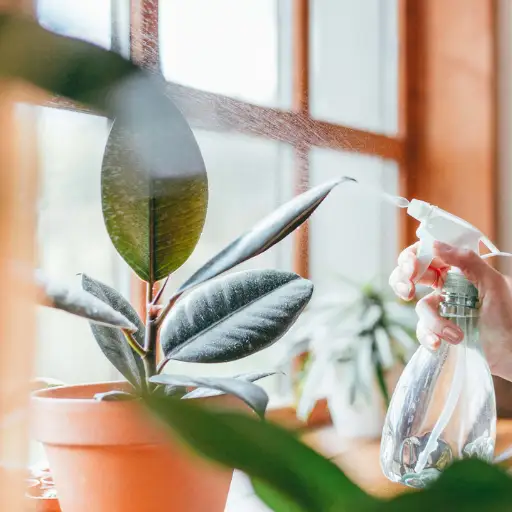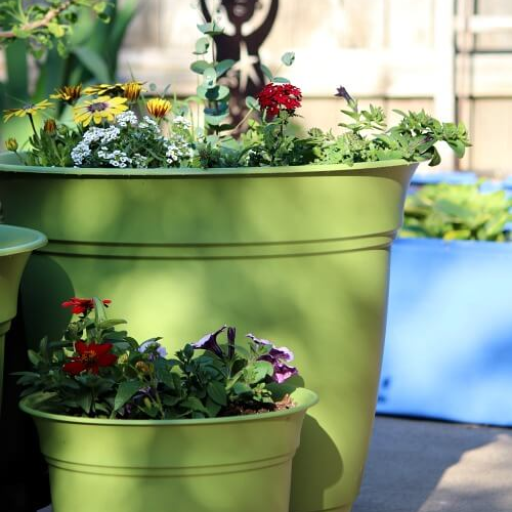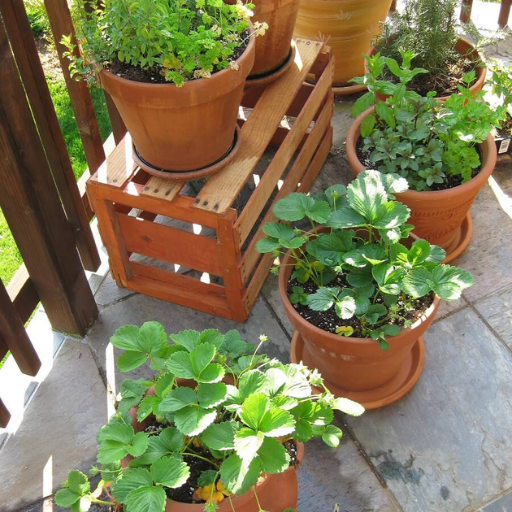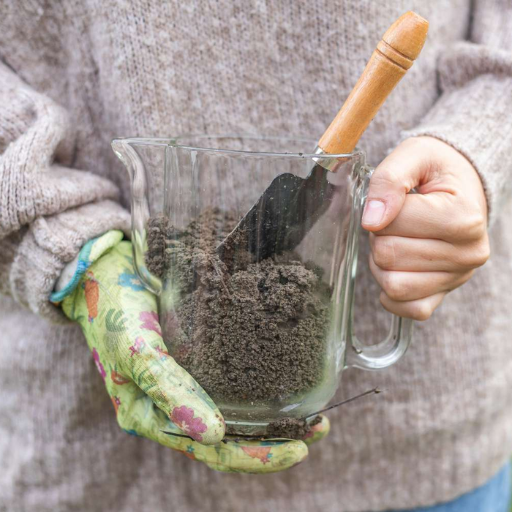Plants can only grow well when they are fundamentally given the right food. This underemployed but efficient method of enriching soil is through Epsom salt, which acts as a natural plant nutrient. The simple steps of making your plant food using Epsom salt, its advantages to your plants, such as magnesium and sulfate, and how to use it effectively will be discussed in this article. Whether you’re an experienced gardener or just a beginner who has turned green, this post provides valuable tips for making eco-friendly decisions regarding your garden.
What Is Epsom Salt and Why Is It Good for Plants?

What is Epsom Salt?
Epsom salt, scientifically called magnesium sulfate, is a mineral compound that occurs naturally and contains magnesium, sulfur, and oxygen. It is named after a bitter saline spring found in Epsom, England, where it was first discovered. This white crystalline substance dissolves readily in water, making it suitable for gardening, other household uses, and health applications. In the plant context, however, the magnesium and sulfate components of Epsom salt help improve nutrition uptake, thereby increasing chlorophyll production and overall plant growth.
How Does Epsom Salt Benefit Plants?
Key benefits of the use of Epsom salts on plants include:
- Improved Nutrient Uptake: Magnesium aids plants in assimilating proper nutrients into their systems. It also acts as a carrier for other essential elements such as nitrogen, phosphorus, and potassium. This results in better productivity by the plants.
- Enhanced Chlorophyll Production: Magnesium is a key component in chlorophyll molecules. Thus, elevated levels of chlorophyll, enabled by the addition of Epson salt, enhance light absorption, which leads to efficient photosynthesis, resulting in healthier plants with darker foliage.
- Supports Flowering and Fruiting: The presence of magnesium promotes energy generation and sugar production, which are required for fruit and flower production. Increased yields are often experienced when applying Epson salt, so people growing flowers or vegetables can take advantage.
- pH Balance: Epson salt must be used to maintain soil pH at an optimal condition. It helps maintain soil pH levels around 6-7, which supports most garden plants’ best nutrient uptake condition base range. When used in the garden, it can serve as one way to adjust soil pH, hence fostering a more appropriate root growth environment.
- Prevention of Deficiencies: Deficiency symptoms like yellowing leaves (chlorosis) and retarded root development occur due to lack of enough magnesium ions in the soil. This ensures the plants are well supplied with enough magnesium ions for average growth.
Recommended application rates may vary, but a rule of thumb prescribes about 1-2 tablespoons of Epsom salt per gallon of water for maintenance feedings every few weeks during the growing season (Lowenfels and Lewis 2006). Of course, these amounts should be adjusted based on plant needs or soil conditions.
Which Nutrients in Epsom Salt are Essential for Plants?
This is because, after my research, I have realized that magnesium is one of the essential nutrients plants in Epsom salt require. This nutrient is necessary as a critical component in chlorophyll, which plays a vital role in photosynthesis. In addition, sulfate, which makes up part of the salts, helps in the absorption process, among other benefits, improving overall plant health. When employing Epson Salts in my garden, I always look at two primary nutrients outlay; they significantly increase chlorophyll production while supporting flowering and fruiting, leading to healthier, more lively plants.
How to Use Epsom Salt for Different Plants

How to Use Epsom Salt for Tomato Plants?
To properly use Epsom salt on my tomato plants, I usually begin by combining 1-2 tablespoons of it with a gallon of water. After that, I can put this mixture at the bottom of the plants every few weeks, especially during the growing season, so that they are guaranteed a sufficient supply of magnesium and sulfate. In addition, when transplanting seedlings, putting them into a planting hole filled with Epsom salt may boost the development of the root system in the initial stage. Besides, if i notice yellow leaves, i may intensify frequency of application as it can be an indication of low magnesium levels. Above all else, I monitor my plant’s health, changing how much Epsom salt I use depending on their requirements.
Is Epsom Salt Suitable for Ferns and Other Houseplants?
Yes, ferns and other houseplants will love to have some Epsom salt because these kinds mostly need just the right amount of magnesium and sulfate for proper progress. As far as my ferns are concerned, though, I add one tablespoon to a gallon of water once a month throughout the growing periods. This enables them to look beautiful and healthy with lush green foliage, etc., but such things should always be considered along with individual requirements; too much salt substance could give rise to nutrient imbalances, so one has to be careful. For other houseplants, such cases should always be followed where their rate differs based on patterns and demands.
What Plants Benefit Most from Epsom Salt?
As per my research, certain plants enjoy more benefits from Epsom salts; hence, those living on soils rich in magnesium should not miss out either. From my experience, tomatoes, peppers, and roses respond positively when you apply Epsom salt to them, as they have better growth vigor and bloom brightly. Furthermore, cucumbers and squash also get a kick from the extra magnesium because magnesium aids in nutrient absorption as well. Similarly, among other uses, I have realized that lilacs and azaleas get better results when they produce large, beautifully colored flowers with the application of Epsom salt. In conclusion, applying Epsom Salt during their active growth stages and for these plants is best.
How to Make Your Plant Food with Epsom Salt

Steps to Make a Common Epsom Salt Solution
To develop a regular salt of Epsom, I initiate by dissolving one tablespoonful of Epsom salt in one gallon of water. Assuring the entire dissolution of the salt so it can be mixed well. This mixture is suitable for my plants due to its immediate availability of magnesium and sulfate, which are necessary for their growth. Usually, I pour this solution directly on the soil without overdoing it, but only once each month when plants are growing. That way, it is consistent with information from several reputable gardening websites where experts say that dilution with moderation prevents nutrient misbalance.
How Many Teaspoons of Epsom Salt Per Gallon?
According to my research among various reliable gardening websites, one tablespoon is the consensus regarding how much Epson salts should be put in every gallon of water to achieve a proper concentration. With such an amount per unit volume, magnesium and sulphate ions will be provided at adequate levels without causing any harm to the crops. It helps me mix this solution up and apply it throughout the growing season at monthly intervals, thereby encouraging healthy plant development. Moreover, some sources suggest adjusting the amount for specific plants or growth stages; for example, using up to 2 tablespoons for heavy feeders like tomatoes may yield better results.
Can You Use Epsom Salt with Other Fertilizers?
Definitely, yes, because there can also be an enhancement in nutrient delivery by combining Epsom salt with other fertilizers for application on these plants. According to several top gardening sites that I rely upon most times mainly because they provide vital information concerning gardening practices, applying Epsom salts together with well balanced fertilizer has been recommended by many experts in this field globally. Standard fertilizers often lack these elements, especially sulfur and magnesium, which are found in abundance within Epson salts. After all, I routinely blend Epsom salt into my fertilizer solutions to avoid exceeding the magnesium levels recommended by professionals due to imbalances caused by excess quantities. This way a lot of my plants grow better, especially ones like peppers and roses which require extra magnesium.
How Often Should You Use Epsom Salt on Plants?

How Often Should Epsom Salt Be Used?
According to popular gardening sites, I apply Epsom salt every 4 to 6 weeks during the growing season. This coincides with plants’ most active growth phase and maximum nutrient demand. In terms of technical considerations, I consider the following:
- Rate: Every 4 to 6 weeks
- Strength: For most plants, use one tablespoon of Epsom salt per gallon of water; for tomatoes, use two tablespoons.
- Method: The Epsom salt solution is mixed into ordinary irrigation water, which can be done through foliar spraying or directly at the base of the soil, distributing it equally.
Consequently, my approach ensures that magnesium and sulfate are consistently available for my plants, supporting their well-being and productivity throughout their lifespan.
Can Too Much Epsom Salt Be Dangerous?
Yes, excessive use of Epsom salt on plants could have side effects. According to my findings from various gardening websites, although magnesium is essential to plant health, too much Epsom salt can cause an imbalance in nutrients. Elevated magnesium levels may interfere with the uptake of other important nutrients, such as calcium and potassium, necessary for a good plant’s development. Moreover, applying it too frequently makes the environment saline when this occurs in soil, causing root problems that lead to poor water absorption by roots. Thus, I always ensure that I follow recommended application instructions and look out for any signs of distress on my plants so that they remain healthy.
How Does One Change The Frequency Of Applying Epsom Salt To Different Plants?
Changing how often one applies epsom salts entails considering varying nutritional needs amongst plant species and their growth stages. It should be done with tender herbs like thyme once after six weeks but at half strength (1/2 tablespoon per gallon). For mid-range feeders, including bell peppers, stick to once every four or six weeks using one tablespoon. This is the same concentration I use for tomatoes and other high-feeding crops, but then I water them every month. Typically, I see how each plant type reacts and change the regimen as needed to optimize their development and well-being.
What Are the Signs of Magnesium Deficiency in Plants?

How to Detect Magnesium Deficiency in Leaves?
Whenever I go around my plants and have a look for magnesium deficiency, I specifically check the leaves. The most typical sign is “inter-veinal chlorosis,” whereby yellow blotches appear between still-green veins. It usually starts with old leaves and can spread to the entire plant if not treated early enough. Moreover, leaf curling, mottled appearance, or necrotic spots can be signs of severe deficiency. I observe these symptoms to quickly address any nutrient deficiencies and ensure the healthy growth of my plants.
What other Symptoms may Indicate the Need for Epsom Salt?
Other symptoms that indicate that Epsom salt should be applied include poor fruit development, thinning stems, and stunted growth. For instance, when my plants, such as tomatoes and peppers, do not produce as they should or have small, misshapen fruits, it could imply a shortage of magnesium, which can be rectified through the use of Epsom salt.
Also, I always look for delicate feelings, such as pale yellow leaves that could arise from low magnesium levels. If its growth seems to lag compared to other plants in the field, this usually signals a lack of enough magnesium content. I have gathered that applying 1-2 tablespoons of Epsom salt per gallon will give a good amount of magnesium supplement while using water as a carrier. Additionally, it is essential to consider soil’s technical factors, whose major one should contain around 50 – 150 ppm of Mg for better health of crops. When tests show low levels, changing my method to the Epsom Salt fertilization approach guarantees my plant adequacy regarding the nutrient requirements.
Can Other Plant Deficiencies be Helped by Using Epsom Salt?
Epsom salt does help with more than just magnesium deficiency; otherwise, the cases where it has been recommended would not exist. It is often suggested to aid in overcoming low levels of sulfur, essential in synthesizing amino acids and proteins in plants. If my plants have poor flowering or fruit set, I suspect sulfate deficiency can be solved using Epsom salt.
Here are some useful technical indicators according to my research from top websites:
- Sulfate Level: The soil should contain 15 – 20 ppm of sulfates. If the readings after testing are lower, Adding Epsom salt helps.
- Magnesium Content: As mentioned earlier, magnesium present at between 50 and 150 ppm is ideal. I always perform soil tests regularly to ensure proper fertilization adjustment.
I apply all these so that my plants get a range of nutrients for survival.
Reference sources
Frequently Asked Questions (FAQs)

Q: What is the composition of epsom salt, and how does it benefit plants?
A: Epsom salt comprises magnesium and sulfur, essential micronutrients plants need for growth. Magnesium helps with photosynthesis, while sulfur aids in nutrient absorption and seed germination.
Q: How do I prepare homemade plant food using epsom salt?
A: Mix 1 gallon of water with one tablespoon of epsom salt to prepare a recipe for homemade plant food. This solution is easy to make and helps provide essential nutrients to your plants.
Q: Can epsom salt be combined with other household items for plant care?
A: Yes, epsom salt can be used alongside other substances like baking soda and ammonia to create a comprehensive nutrient mix for your plants. For instance, mixing one teaspoon of baking soda and a small amount of ammonia with your epsom salt and water solution can be beneficial.
Q: How frequently should I fertilize my plants using epsom salt?
A: To effectively feed your plants, you can fertilize them with an epsom salt solution every 2-4 weeks. This regular application helps to ensure that your plants receive a steady supply of magnesium and sulfur.
Q: What are the signs that my plants might be magnesium-deficient?
A: Common signs of magnesium deficiency in plants include yellowing leaves (chlorosis) and poor growth. Epsom salt can help address these issues by providing the necessary magnesium and sulfur.
Q: How much epsom salt should I use for my rose bushes?
A: For rose bushes, adding one tablespoon of epsom salt per gallon of water and applying one cup of this solution per plant to encourage vibrant blooms and healthy growth is recommended.
Q: Can I use epsom salt for seed germination?
A: Yes, epsom salt can aid in germination by providing essential nutrients to the seeds as they sprout. Adding a small amount of epsom salt to the soil or water can enhance the germination process.
Q: What makes epsom salt a good nutrient for plants?
A: Epsom salt is a good plant nutrient because it supplies magnesium and sulfur, which are crucial for photosynthesis and nutrient absorption. These micronutrients help plants to grow strong and healthy.
Q: Is it easy to make homemade plant food with epsom salt?
A: Making homemade plant food with epsom salt is easy. All you need is a gallon of water and a tablespoon of epsom salt. Mix them, and you have a simple, effective fertilizer for your plants.
Q: Can epsom salt help improve the health of ferns and other frond-bearing plants?
A: Epsom salt will help get past deficiencies in frond-bearing plants like ferns. It can enhance their growth and help them maintain a vibrant green color.







